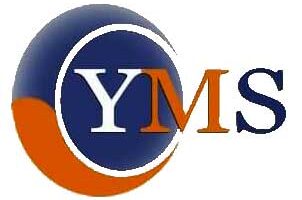Ultimately, the aim is to enable data-driven decision-making, improve data accessibility, and ensure knowledge quality and governance. Data fabric achieves this by making a virtualized layer that abstracts the underlying information sources and methods, presenting a unified view to data customers. It seamlessly connects and integrates knowledge from varied sources, together data mesh vs data fabric with on-premises databases, cloud-based purposes, streaming information, and extra. This integrated approach simplifies data access and accelerates data-driven decision-making. Its more centralized data structure focuses on creating a cohesive and built-in layer of knowledge throughout an organization.
Forrester analyst Noel Yuhanna was among the first people to define the info fabric again within the mid-2000s. Conceptually, an enormous knowledge cloth is actually a metadata-driven means of connecting a disparate collection of data instruments that handle key pain points in massive knowledge projects in a cohesive and self-service method. Specifically, knowledge cloth options ship capabilities in the areas of information entry, discovery, transformation, integration, security, governance, lineage, and orchestration.
Key Parts Of A Knowledge Material
These challenges hinder organizations from quickly responding to enterprise calls for. While not completely new to the data landscape, these challenges have assumed higher significance as organizations attempt to speed up digital transformation. To totally capitalize on these advantages and keep forward of the competitors, organizations should embrace knowledge mesh and seize the chance to rework their knowledge architecture. The success of the early Data Mesh movers will doubtless determine the course and supreme winner of this debate. At its core, the Data Fabric is about eliminating humans from the method as much as possible.
Both information fabric and information mesh architectures tackle challenges such as data proliferation, lack of agility, lack of collaboration, and lack of trust in data. Data fabric, however, is a centralized approach to knowledge architecture, where data is built-in and accessible throughout the group. In essence, a knowledge mesh is a paradigm shift in data architecture that empowers domain house owners, promotes collaboration and autonomy, and enables knowledge democratization.

In the seek for architectural ideas and architectures to support your big knowledge tasks, all of it comes right down to finding what works best on your own specific wants. In your quest to build one of the best information structure on your organization’s current and future needs, you’ve many options. But fortunately for you, sure patterns have emerged from the maw that can help you on your information path, including knowledge materials and data meshes. Data mesh allows the supply of customized data products by empowering area groups to own the delivery of information merchandise. With the exploration of Data Fabric and Data Mesh architectures, a transparent understanding can be reached on which one is the optimal alternative. Data Fabric supplies a centralized approach, ensuring seamless integration and collaboration among numerous information sources.
After all, making unhealthy information more accessible and discoverable may value you dearly, doing more hurt than good. This also makes it potential to separate your data from the applications that contain it. This autonomous data can then be accessed inside this interwoven fabric of knowledge itself, somewhat than counting on point-to-point integrations. Businesses count on so much from their knowledge; it’s at the heart of every little thing they do. However, the standard database might not be fast sufficient for every organization’s wants.
Conversely, information material might evolve to higher help edge computing by enhancing knowledge synchronization capabilities and making certain seamless integration between edge units and central databases. Instead of being centrally managed by an organization’s IT division, particular person teams (domains) inside the organization handle their own data. The information is decentralized, which means that the staff most conversant in it has management over it.
A Single Level Of Access To All Your Data
The Data Fabric advocates view the fully distributed data management follow of the Data Mesh as a recipe for chaos, silos, and lack of adherence to requirements and international identifiers. They level out that distributed knowledge governance is unlikely to succeed with out central enforcement. And so far as knowledge governance, robust leadership, coaching, and greatest practices inside the enterprise can overcome the inherent challenges of doing distributed governance. A information fabric structure might be considered part of a knowledge mesh, however the major differences are the 4 pillars upon which an information mesh structure is based.
- Data mesh advocates for distributed, domain-based ownership and custodianship of information.
- Now, data groups view the data mesh method as a major alternative to transition from monolithic data platforms to information microservices (business contextual services) architecture.
- Nobody desires to be caught out and about with holes or tears covering their footwear.
- Orchestration and DataOps – Enterprise orchestration and XOps allow automated orchestration of all knowledge supply flows by using DataOps, MLOps and InfosecOps in help of steady analysis and monitoring.
- Traditional approaches to accessing and managing knowledge are complex and rigid, which outcomes in challenges as data wants and environments evolve.
I am more and more getting requested concerning the difference between the Data Fabric and the Data Mesh. They are both rising paradigms designed to solve a prevalent problem in modern data management for large enterprises, and should you only have a surface understanding of those two ideas, they sound very comparable. Nonetheless, they’re essentially totally different techniques, that make vastly completely different technical assumptions, and it seems appropriate to explain the differences in a public forum. Domino’s now describes itself as an “e-commerce company that happens to sell pizza”. With Domino’s AnyWare, prospects can order pizzas via Alexa or Google Home, Slack, textual content message, good TVs, or Domino’s own website or apps. That’s just one cause why Domino’s is ingesting a huge amount of customer data across eighty five,000 structured and unstructured information sources.
Leading Resolution Providers
Analysis jobs then comply with the connections across datasets to include a broader swath of information in the analysis. Reach out to the Monte Carlo staff to learn to drive adoption and trust of your information fabric with higher knowledge high quality. The U.S. Army—in fact, the complete Department of Defense—is adopting the data material framework to ship essentially the most related insights to its personnel across the globe, as fast as possible.

But with tons of and thousands of places, a dozen ways to position an order, and sure hundreds of thousands of consumers, how do they compile all this knowledge and make it usable for analytics that drive business improvements? By building a data material structure that integrates information from these myriad information pipelines, ensures its high quality, and makes it easily out there for users throughout the company to entry on an as-needed foundation https://www.globalcloudteam.com/. The core precept driving the information mesh is rectifying the incongruence between the data lake and the data warehouse, as we wrote earlier this 12 months. Dehghani writes a few third-generation system (Kappa) marked by real-time data flows and embrace of cloud services, nevertheless it doesn’t solve the underlying usability hole between first- and second-generation techniques. Data mesh promotes a versatile data governance operating model through federated governance.
Making Ready Your Knowledge Structure For The Future
Similarly, knowledge mesh architectures will want to adapt to comply with various regional rules by way of standardized safety protocols embedded within each domain. As information administration turns into more advanced, new innovations and adaptations emerge to shape the long run panorama of how information mesh and information fabric methods are applied. By preserving pace with these tendencies, organizations can better put together for the longer term, making certain their knowledge administration strategies are effective, compliant, and forward-thinking. Understanding the core variations between these two approaches is crucial for organizations confronted with the selection. Each presents a definite blueprint for managing, integrating, and using knowledge to drive decision-making and innovation. Here, we’ll go into a few of the core variations between a knowledge mesh and an information cloth based on a quantity of important aspects.
So let’s unpack what an information fabric actually is, how it works, what it promises to deliver—and how it differs from the similarly popular data mesh architecture. In some ways, information material and information mesh reflect two ranges of technical maturity and work at different ranges inside a business or group. Each question helps you consider essentially the most fitting structure based on multiple aspects of your organization, from culture and expertise to governance and business objectives.
It’s designed to allow unified entry to all an organization’s data, no matter the place it resides. Whether scaling a startup or a longtime enterprise, the right architecture throughout the broader context of knowledge warehouse consulting can be the linchpin of your knowledge operations. Should you think about using the data fabric architecture as an alternative of a traditional, extra decentralized knowledge mesh?
Information Integration & Accessibility
To construct a knowledge material, you must leverage automation throughout your purposes and datasets. Both are popular (and considerably abstract) ideas in knowledge platform architecture. Big architectural shifts always require buy-in from the proper leaders and stakeholders. As you begin to discover whether the data cloth is right for your small business, include those key leaders in your conversations and begin to construct help from the earliest possible days.
It supplies a versatile and scalable resolution for managing data as it grows in volume and complexity. While data mesh presents a quantity of benefits for data management, it’s necessary to consider the potential challenges of adopting this approach. While both data material and data mesh supply an environment friendly approach to manage the huge quantities of data that organizations gather, they achieve this in basically different ways and have their very own strengths and weaknesses. In this text, we define both time period, the benefits and downsides of every technique, and a evaluate the 2 that can help you decide what works greatest on your organization. People are beginning to fully recognize the worth of data to running a successful enterprise. Human instinct is essentially fallible, memory is temporary, and basing decision-making on real data is important to success in the modern world.

